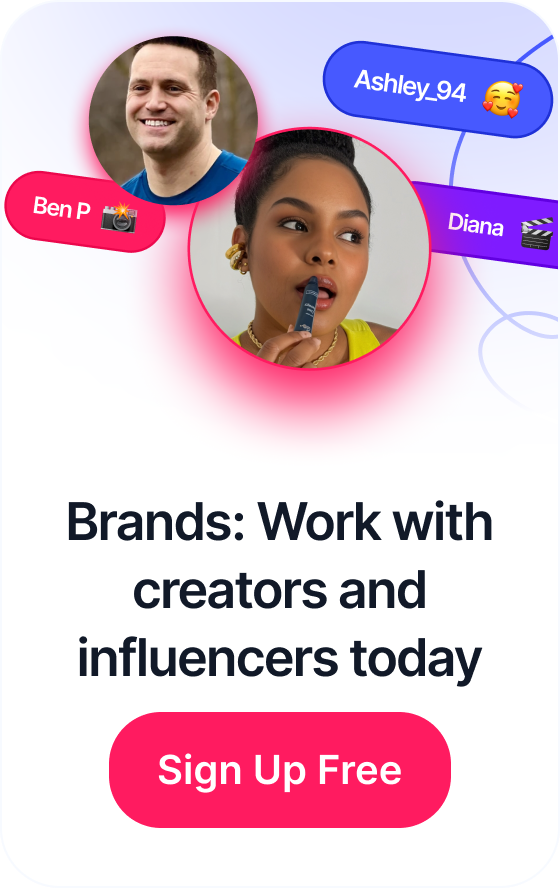 12 Fresh Instagram Reel Ideas That Actually Work (2025)
12 Fresh Instagram Reel Ideas That Actually Work (2025)
Think about the term "digital marketing campaign management." It's more than just a buzzword; it's the strategic process of planning, executing, tracking, and ultimately optimizing everything you do online. It’s the framework that takes a bunch of scattered activities and molds them into a single, cohesive strategy. This ensures every dollar you spend is pushing you toward a specific business goal, whether that's building brand awareness or driving direct sales.
Table of Contents
Why Campaign Management Is Your Growth Engine

In today's crowded market, just running a few ads or posting on social media isn't going to cut it. Without a structured plan, your marketing can feel chaotic and disconnected. Even worse, it becomes almost impossible to figure out what’s actually working.
This is where effective campaign management comes in. Think of it as the central nervous system for your marketing, tying every single tactic back to your core strategy.
It’s this unified approach that transforms reactive, one-off tasks into a proactive, predictable engine for growth. Instead of just guessing which ad creative did best, you have a system to test, measure, and scale the winners. It's the difference between launching a campaign and just hoping for the best versus intentionally engineering a specific outcome.
Moving from Guesswork to Data-Backed Decisions
When you have a structured management process, your efforts stop being just creative and start becoming consistently effective. It brings the clarity you need to make smart, data-backed decisions that maximize your return on investment (ROI).
Just consider the opportunity here: the digital marketing industry is valued at a massive $667 billion, yet a surprising 47% of businesses are still flying blind without a defined digital strategy. This gap creates a huge advantage for brands that take a professional approach to their campaigns.
And with 94% of small businesses planning to increase their digital marketing spend, having a solid management system in place is absolutely crucial for turning that investment into real, tangible growth. If you're curious, you can discover more marketing statistics and insights that really highlight this trend.
A systematic approach empowers you to:
- Maintain Brand Consistency: Keep your messaging cohesive and instantly recognizable across all your channels, from email campaigns to your latest TikTok.
- Maximize ROI: Put your budget where it counts by allocating funds to the highest-performing channels and creatives, all based on real-time data.
- Improve Team Collaboration: Build a seamless workflow for everything from content approvals and creator partnerships to campaign execution.
The single most critical shift a brand can make is moving from reactive marketing to proactive campaign management. It’s not just about organization; it’s about building a sustainable and scalable path to growth.
At the end of the day, this isn't just about managing a to-do list. It's about building a repeatable system that drives predictable results and fuels your business for the long haul.
Laying the Foundation for a Winning Campaign
Every truly successful campaign starts long before the creative brainstorming sessions. It begins with a rock-solid foundation—a strategic blueprint that guides every single decision you'll make down the line. This is about making sure you have absolute clarity and purpose before a single dollar is spent on ads or content. It means getting out of your own head and digging into the data to figure out who you’re really talking to.
The best place to kick things off is by creating detailed buyer personas. And no, I don't mean guessing. Dive into your CRM, talk to your customer support team, and actually interview a few customers. This is how you uncover their real pain points, what drives them, and the exact language they use. That’s how you craft a message that actually connects.
Conducting Practical Competitive Analysis
Once you have a crystal-clear picture of your audience, it's time to see what everyone else is doing. A practical competitive analysis isn't about copying your rivals; it's about finding the gaps they've completely missed. Look at their ad messaging, which channels they pour money into, and where their customer engagement seems to be buzzing. This intel is your secret weapon for carving out a unique space for your brand.
For example, imagine you're an e-commerce brand selling sustainable activewear. You might notice your main competitor is all-in on Instagram ads targeting millennials. But if you dig a little deeper, you could find a massive, untapped audience of environmentally-conscious Gen X buyers on Pinterest who are being totally ignored. An insight like that is pure strategic gold.
A well-defined strategy is the difference between aiming for a vague target and hitting a specific bullseye. It provides the focus needed to allocate resources effectively and measure what truly matters for business growth.
Setting SMART Goals for Clarity
The final piece of your foundation is setting goals you can actually measure. Vague targets like "increase brand awareness" are useless because you can't track them effectively. This is where the SMART goal framework (Specific, Measurable, Achievable, Relevant, Time-bound) comes in. It forces you to define what success looks like.
Let’s stick with our e-commerce brand. After defining their audience and spying on the competition, they might set a goal like this:
- Goal: Increase online sales from our new activewear line by 15% within the next quarter (Q3).
- How: By launching a targeted campaign aimed at Gen X women on Pinterest and collaborating with three micro-influencers in the sustainability niche.
See how specific that is? It defines the audience, the channel, the tactics, and the exact metric for success. This foundational work is absolutely critical for any marketing push, and it's especially important when you create a successful multi-channel marketing campaign that needs to be perfectly coordinated. With this blueprint in hand, every move you make becomes more intentional and a lot more impactful.
Choosing Your Channels and Crafting Your Message
Okay, you've got your strategy locked in. Now comes the fun part: deciding where to show up and what to say when you get there.
It's tempting to jump on every new trending platform, but that’s a rookie mistake. The real magic happens when you get laser-focused on where your ideal customers actually hang out online. Forget the hype for a second and ask yourself that one simple question. The answer is your starting point for building a campaign that hits the mark.
Your message needs to be consistent, no doubt. But it also needs to speak the language of each platform. How you talk on LinkedIn should feel completely different from a quick, punchy video on TikTok, even if your core brand voice is the same. It’s a balancing act, but getting it right means your message feels authentic and welcome, not like an awkward party crasher.
This is the flow I use to cut through the noise and figure out exactly where my marketing dollars will do the most good.

As you can see, it’s a clear path from understanding your audience's habits to making a smart, data-backed decision on where to invest your time and money.
Aligning Channels with Campaign Goals
Different channels deliver different results. Simple as that. Are you hunting for high-intent leads who are ready to buy right now? Or are you playing the long game, building a loyal community around your brand?
If you need sales yesterday, something like Google Ads is a no-brainer. You're capturing people actively searching for what you sell. But if you want to build a lifestyle around your brand, Instagram is your playground for stunning visuals and powerful user-generated content (UGC).
The lines are blurring, though, especially with the explosion of social commerce. Think about it: 50% of consumers have found new products on social media, and a whopping 59% have bought something directly through an app. That's a massive shift. You can see more stats on social commerce trends that show just how critical it is to integrate buying options into your social strategy.
Choosing the right channels isn’t about being everywhere; it’s about being in the right places with a message that feels native and valuable to the audience you find there.
To make this decision a little easier, I've put together a quick framework that breaks down the most popular channels.
Marketing Channel Selection Framework
Deciding where to invest your marketing budget can feel overwhelming. This table is designed to give you a high-level overview of the major players, helping you match the channel to your specific campaign goals, target audience, and content style.
| Channel | Primary Audience | Best For (Goal) | Content Format | Average Cost |
|---|---|---|---|---|
| Google Ads | High-intent searchers | Driving immediate leads and sales | Text ads, Shopping ads, Display ads | $1-$2 CPC |
| Millennials & Gen Z | Building brand lifestyle, visual storytelling | Reels, Stories, Carousels, UGC | $0.50-$3.00 CPE | |
| TikTok | Gen Z & Young Millennials | Viral reach, authentic brand personality | Short-form video, trends, creator collabs | $0.01-$0.05 CPV |
| Email Marketing | Existing leads & customers | Nurturing relationships, driving repeat sales | Newsletters, promotions, automated flows | ~$9 per 1,000 subs |
| B2B professionals | Building industry authority, lead generation | Articles, case studies, professional video | $5-$10 CPC |
Keep in mind that costs are just averages and can vary wildly based on your industry, targeting, and ad quality. The key takeaway is to use this as a guide to align your strategy with the platform's strengths, ensuring your message lands with the right people in the right context.
Crafting a Cohesive Cross-Channel Message
Once your channels are picked, you need one unified message that ties everything together. Your core value proposition is the golden thread that should run through every ad, post, and email you send.
Let's say you're a sustainable fashion brand. Your core message is "eco-conscious style."
- On Instagram: You'd showcase this with UGC from creators participating in a beach cleanup, wearing your gear.
- On Google Ads: It becomes ad copy like "Shop Ethically-Made Apparel" targeting relevant keywords.
- In an email: You might send a newsletter detailing the low environmental impact of your new fabric.
See how that works? It’s the same core idea, just adapted for the platform. This consistency is what builds trust and makes it crystal clear what your brand is all about, no matter where someone first discovers you.
Executing Your Campaign With a Seamless Workflow

Let's be honest: even the most brilliant campaign idea can completely fall apart without a rock-solid execution plan. I've seen it happen. To really make an impact, you need to build a seamless workflow that turns your strategy into action, cutting through the chaos that so often derails projects.
This is all about creating a clear, predictable path from the initial creative brief all the way to the final launch.
A well-structured workflow makes sure everyone—from your internal team to the creators you've partnered with—knows exactly what’s expected, when it's due, and how their piece fits into the bigger picture. It’s your best defense against bottlenecks, missed deadlines, and the hidden costs of inefficiency.
Building Your Collaboration Hub
The foundation of any great workflow is a centralized collaboration hub. And I don't just mean a shared Google Drive folder; this needs to be a dynamic space where your entire campaign lives and breathes. Think of it as your mission control for content calendars, creative assets, and all communication.
For example, when launching a new influencer campaign, this hub becomes the single source of truth. Using a platform like JoinBrands lets you manage every single step, from sending out the initial brief to tracking when products are shipped to creators. This simple step prevents crucial details from getting buried in endless email threads.
A seamless workflow does more than just keep you organized. It builds momentum. By removing friction, it empowers your team and partners to focus on what they do best—being creative—instead of getting bogged down in administrative headaches.
With a central system in place, you can also establish a crystal-clear approval process. When a creator submits a draft video, the right people on your team get an automatic notification to review it. All the feedback is left in one spot, creating a transparent record and ensuring changes are made correctly the first time around.
Streamlining Creator and Team Alignment
Getting your internal team on the same page as external partners like freelancers or influencers is often where things get messy. This is where a tight workflow really proves its worth, especially as influencer collaborations become more critical to marketing success.
In fact, 59% of marketers are actively increasing their influencer partnerships. They know the impact this has on consumer behavior, particularly since 76% of social media users say creator content has influenced their purchase decisions. A streamlined workflow is non-negotiable for managing these relationships effectively.
Here’s how a structured process helps keep everyone aligned:
- Clear Briefing: Standardized templates make sure every creator gets the exact same instructions, brand guidelines, and campaign goals. No room for misinterpretation.
- Asset Management: A dedicated space for logos, product images, and brand assets means creators always have what they need, right when they need it.
- Milestone Tracking: Everyone can see key deadlines for drafts, revisions, and final content, which keeps the entire campaign chugging along on schedule.
Ultimately, this operational backbone is what ensures your campaign launches smoothly. A well-managed execution process not only delivers better results but also builds stronger relationships with the creative partners who help bring your brand to life. For more on this, check out our guide on effective social media sales strategies that depend on this kind of flawless execution.
Turning Campaign Data into Actionable Insights

Let's be real: executing a campaign is only half the job. Without solid data, you're just throwing spaghetti at the wall and hoping something sticks. Real campaign management is about digging into the analytics and turning those raw numbers into smart, strategic moves.
This means looking past the ego-boosters like "likes" and zeroing in on the Key Performance Indicators (KPIs) that actually move the needle for your business. The right KPIs always tie directly back to your original goal, giving you a clear line of sight between your efforts and the results.
Aligning Metrics with Campaign Goals
Your campaign's main objective should be the North Star for everything you track. A brand awareness push and a lead generation campaign are two completely different animals, and they need to be measured that way. Mixing them up is a surefire way to misread your results and burn through your budget.
Here’s a quick breakdown of which metrics matter for some of the most common goals:
- For Brand Awareness: It's all about getting eyeballs and attention. Keep a close eye on Impressions (how many times your content was seen), Reach (how many unique people saw it), and Video View-Through Rate (the percentage of people who actually watched your whole video).
- For Lead Generation: Success here is about capturing quality prospects. You'll want to focus on your landing page Conversion Rate, Cost Per Lead (CPL), and the Lead-to-Customer Rate. It's not just about getting leads; it's about getting leads that turn into customers.
- For Direct Sales: This is where the rubber meets the road. Your go-to metrics are Return on Ad Spend (ROAS), Customer Acquisition Cost (CAC), and Average Order Value (AOV).
Getting your tracking set up correctly from day one in a tool like Google Analytics is absolutely essential. This isn't just about collecting numbers; it's about gathering clean, reliable information you can actually trust to make decisions. For a deeper dive, checking out guides on measuring marketing campaign effectiveness can give you a solid foundation.
Data tells a story. Your job as a campaign manager is to become an expert interpreter, listening for clues that tell you where to double down and where to pull back.
From Diagnosis to Action
Anyone can collect data. The real magic happens when you turn it into actionable insights. The trick is to always ask "why" when a metric shifts.
For example, if your click-through rate (CTR) suddenly tanks, don't just hit the panic button. That's a symptom, not the disease. You need to play detective.
Is the ad creative getting stale? Is your audience targeting too wide, causing people to tune it out? Or did a competitor just launch a killer offer that's stealing all the attention? This diagnostic mindset transforms a negative trend into a clear action plan. Maybe it's time to A/B test some new ad copy or give your visuals a refresh.
This whole process is getting a lot smarter with the help of artificial intelligence. In fact, 68% of marketing executives are already seeing positive returns on their AI investments. AI tools can chew through performance data on a massive scale, spotting patterns and optimization opportunities way faster than any human ever could.
And with 62% of consumers being open to generative AI in marketing, its role is only going to get bigger. This shift helps you move from putting out fires to making proactive, data-backed adjustments that keep your campaigns running at peak performance.
How to Optimize and Scale for Long-Term Success
Getting your campaign live is a great feeling, but it’s really just the starting line. The real work in digital marketing campaign management starts now. It's all about non-stop optimization and smart scaling. This is where you turn decent initial results into serious long-term growth.
The heart of this entire process is relentless testing. You have to move past your gut feelings and let the data tell you what to do next.
A/B testing is your best friend here—and I mean for everything. Test your ad copy, the color of your call-to-action buttons, the headlines on your landing pages, and even the images you're using. The trick is to only test one variable at a time so you get clean, reliable insights.
Reallocating Resources for Maximum Impact
As that sweet, sweet performance data starts rolling in, you need to be ready to act on it fast. One of the biggest mistakes I see is when brands stick to a rigid budget just because it was in the original plan. That’s a recipe for wasted spend.
Effective campaign management is about moving your budget in real-time to the channels, creatives, and audiences that are actually delivering.
If you see your Instagram Reels are bringing in leads at half the cost of your search ads, it’s a no-brainer: shift more of your budget over to video. This dynamic approach keeps your marketing dollars working as hard as possible and maximizes your overall return.
The point of optimization isn't just to fix what's broken. It's about finding out what works best and then pouring gasoline on that fire. This creates a powerful feedback loop of testing, learning, and growing that consistently drives up your campaign ROI.
Scaling Your Wins Without Losing Efficiency
So, you've found a winning formula—a specific ad, a target audience, and a channel that’s crushing it. The next move is to scale. But scaling isn’t as simple as just cranking up the budget. If you do that, you'll likely hit diminishing returns as you saturate that initial audience pool.
Smart scaling means expanding your reach methodically. Here are a few strategies that have worked time and time again:
- Build Lookalike Audiences: Take your best-performing customer segments and use them to find new people with similar traits on platforms like Facebook and Google. It's a goldmine for finding new customers.
- Test New Ad Formats: Is a static image ad doing well? Great. Now, try turning that same concept into a short-form video or a carousel post. You'll capture attention in totally different ways.
- Expand Geographically: Start introducing your successful campaign to new cities, states, or even countries where your target demographic hangs out.
This structured approach helps you grow your campaign’s reach and impact without torching the efficiency you worked so hard to build. It’s the final, crucial step in turning a single successful campaign into a sustainable engine for business growth.
Ready to streamline your entire campaign workflow from creator discovery to content approval? With JoinBrands, you get the tools to manage every aspect of your creator marketing, all in one place. Start your next campaign with JoinBrands today!








